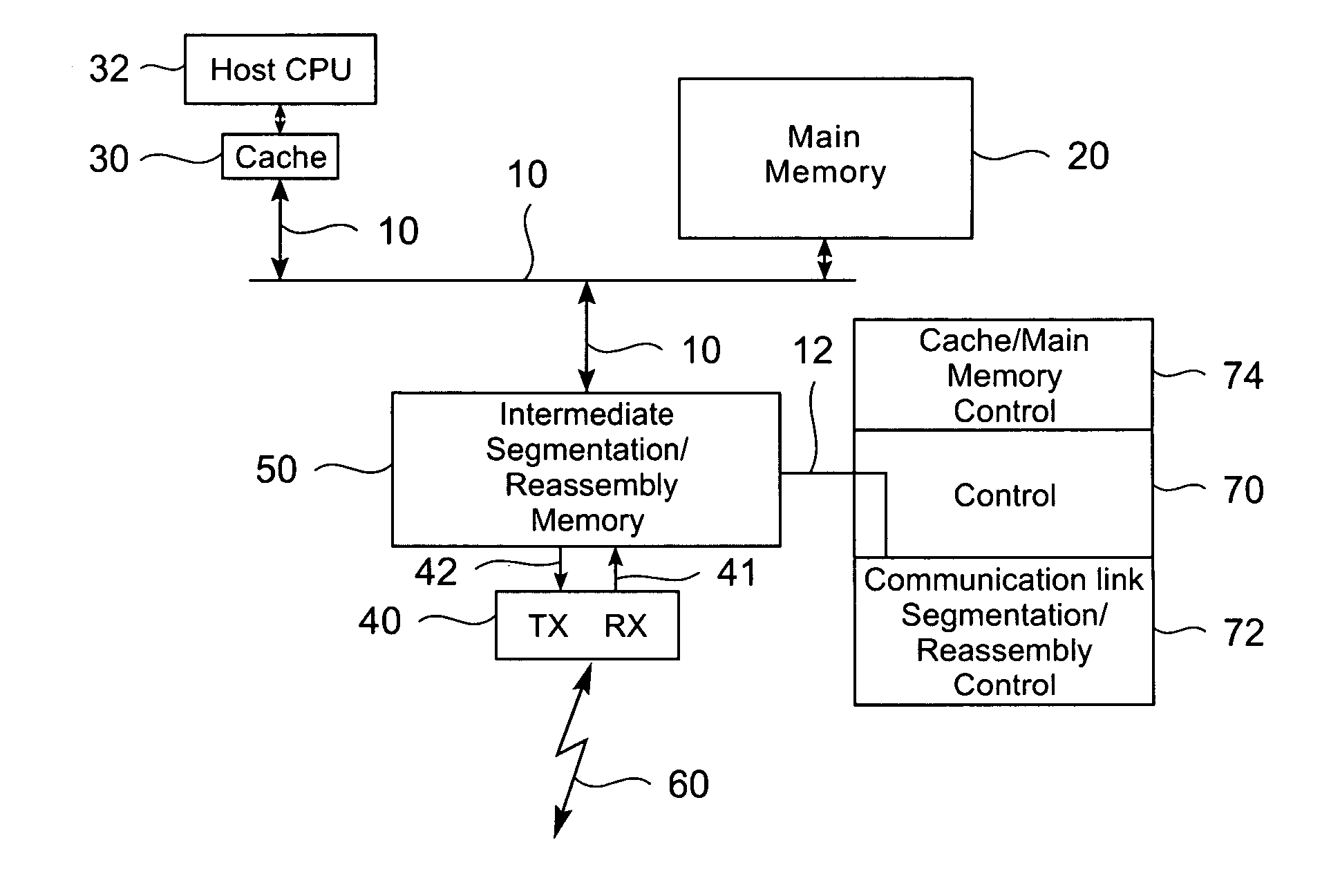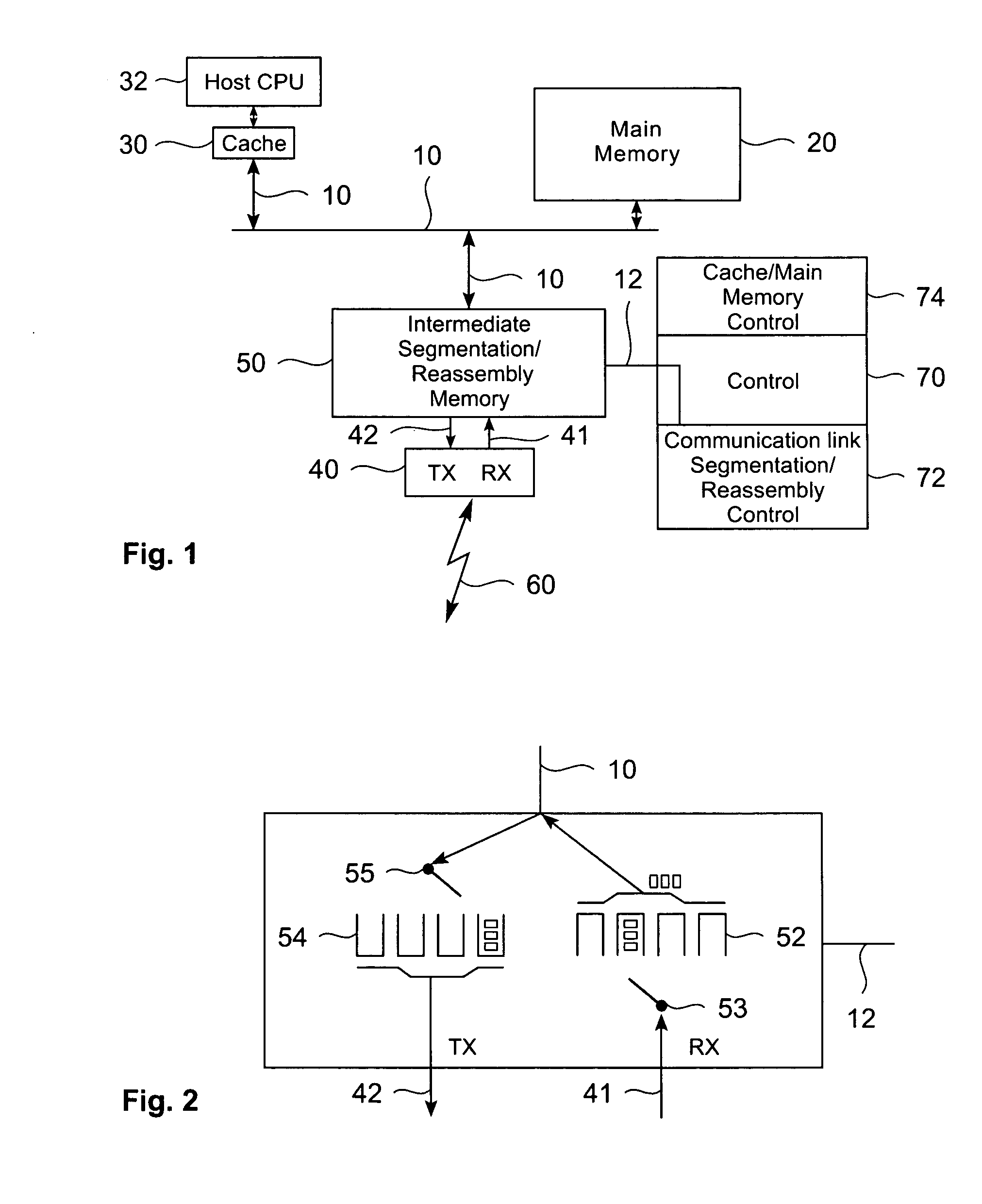Method and apparatus for intermediate buffer segmentation and reassembly
a buffer and intermediate technology, applied in the field of intermediate buffer segmentation and reassembly, can solve the problems of bogging the host computational throughput down, substantial amount of additional memory, and additional cos
- Summary
- Abstract
- Description
- Claims
- Application Information
AI Technical Summary
Benefits of technology
Problems solved by technology
Method used
Image
Examples
Embodiment Construction
[0030] Before an embodiment is described in detail with reference to the figures, some general issues are addressed.
[0031] First there is the fact that every host computer system has an optimal memory-block transfer size, which is very often in the order of one or multiple cache-lines: say multiples of 32 bytes. Every bus transfer has a fixed overhead of addressing cycles and possibly other parameters which are to be transferred first. The number of fixed bus or addressing cycles to set up a data transfer and the maximum data bus length are properties of the data bus. The relationship thereof describes the efficiency of the data bus. An optimal efficiency is therefore achieved if the number or length of packet data is identical or nearly similar to the maximum data bus length. The efficiency is decreasing when smaller packet data is transmitted and becomes even worse if the fixed overhead of addressing cycles is large compared to the actual packet data to be transferred.
[0032]FIG....
PUM
 Login to View More
Login to View More Abstract
Description
Claims
Application Information
 Login to View More
Login to View More - R&D
- Intellectual Property
- Life Sciences
- Materials
- Tech Scout
- Unparalleled Data Quality
- Higher Quality Content
- 60% Fewer Hallucinations
Browse by: Latest US Patents, China's latest patents, Technical Efficacy Thesaurus, Application Domain, Technology Topic, Popular Technical Reports.
© 2025 PatSnap. All rights reserved.Legal|Privacy policy|Modern Slavery Act Transparency Statement|Sitemap|About US| Contact US: help@patsnap.com


